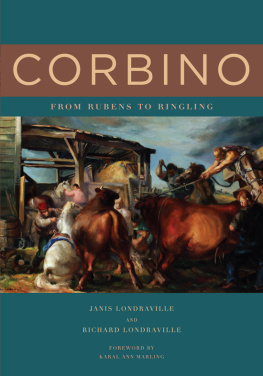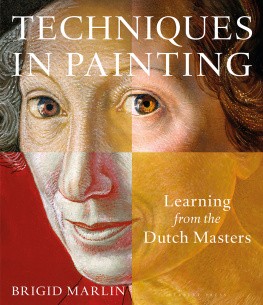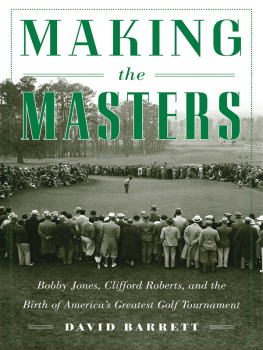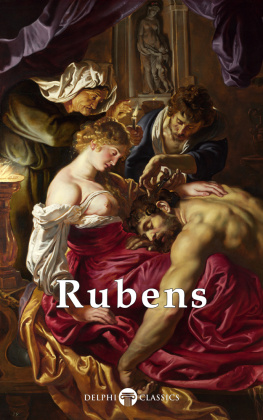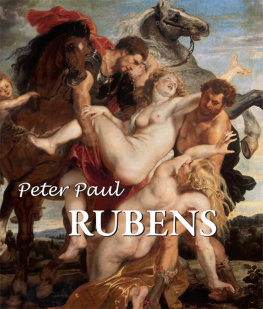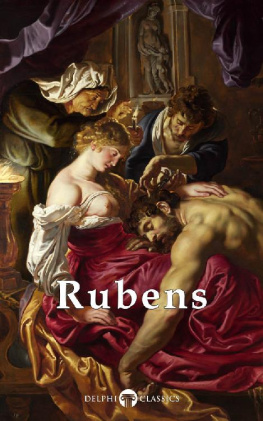Corbino Jon - Corbino: From Rubens to Ringling
Here you can read online Corbino Jon - Corbino: From Rubens to Ringling full text of the book (entire story) in english for free. Download pdf and epub, get meaning, cover and reviews about this ebook. City: Albany, N.Y, year: 2011, publisher: SUNY Press;Excelsior Editions/State University of New York Press, genre: Non-fiction. Description of the work, (preface) as well as reviews are available. Best literature library LitArk.com created for fans of good reading and offers a wide selection of genres:
Romance novel
Science fiction
Adventure
Detective
Science
History
Home and family
Prose
Art
Politics
Computer
Non-fiction
Religion
Business
Children
Humor
Choose a favorite category and find really read worthwhile books. Enjoy immersion in the world of imagination, feel the emotions of the characters or learn something new for yourself, make an fascinating discovery.
- Book:Corbino: From Rubens to Ringling
- Author:
- Publisher:SUNY Press;Excelsior Editions/State University of New York Press
- Genre:
- Year:2011
- City:Albany, N.Y
- Rating:5 / 5
- Favourites:Add to favourites
- Your mark:
- 100
- 1
- 2
- 3
- 4
- 5
Corbino: From Rubens to Ringling: summary, description and annotation
We offer to read an annotation, description, summary or preface (depends on what the author of the book "Corbino: From Rubens to Ringling" wrote himself). If you haven't found the necessary information about the book — write in the comments, we will try to find it.
Corbino: From Rubens to Ringling — read online for free the complete book (whole text) full work
Below is the text of the book, divided by pages. System saving the place of the last page read, allows you to conveniently read the book "Corbino: From Rubens to Ringling" online for free, without having to search again every time where you left off. Put a bookmark, and you can go to the page where you finished reading at any time.
Font size:
Interval:
Bookmark:

Laughing Angel, 1941, opaque watercolor, oil, and fabricated black chalk on board (34 3/8 23 5/16 inches). 2009 Marcia Corbino/Artists Rights Society (ARS), New York. Collection of the Whitney Museum of American Art, New York; purchase 42.12.
CORBINO
FROM RUBENS TO RINGLING
JANIS LONDRAVILLE
AND
RICHARD LONDRAVILLE
FOREWORD BY KARAL ANN MARLING

COVER ART: Stampeding Bulls, 1937, oil on canvas (27 15/16 41 15/16 inches).
2009 Marcia Corbino/Artists Rights Society, New York. Private collection.
Courtesy of the Georgia Museum of Art.
Published by State University of New York Press, Albany
2011 State University of New York
All rights reserved
Printed in the United States of America
No part of this book may be used or reproduced in any manner whatsoever without written permission. No part of this book may be stored in a retrieval system or transmitted in any form or by any means including electronic, electrostatic, magnetic tape, mechanical, photocopying, recording, or otherwise without the prior permission in writing of the publisher.
For information, contact State University of New York Press, Albany, NY
www.sunypress.edu
Production by Kelli W. LeRoux
Marketing by Fran Keneston
Library of Congress Cataloging-in-Publication Data
Londraville, Janis, 1949
Corbino : from Rubens to Ringling / Janis Londraville and Richard
Londraville ; foreword by Karal Ann Marling.
p. cm.
Excelsior editions.
Includes index.
ISBN 978-1-4384-3571-8 (hardcover : alk. paper) 1. Corbino, Jon, 19051964. 2. Italian American artistsBiography. I. Londraville, Richard, 1933 II. Title. III. Title: From Rubens to Ringling.
N6537.C6597L66 2011
759.13dc22
2010031913
10 9 8 7 6 5 4 3 2 1
To Linda R. McKee,
for believing
ILLUSTRATIONS
AND COLOR PLATES
FOREWORD
More than twenty-five years ago, I wrote my first bookon New Deal mural painting. While my research was less concerned with individual artists and their stylistic idiosyncrasies than it was with the knotty relationship between iconography, public expectations, and the politics of poverty, I encountered now-almost-forgotten artists at every turn. One of these was Jon Corbino. Or, as the art press of the era more often called him, CORBINO. During the troubled 1930s, in other words, his was a kind of brand name. He was a known entity, like Rubens and Delacroix, to whom he was most often compared. In some artistic quartersthe summer art colony circuit and the galleries of Madison Avenue, at any ratehis was a genuine, formidable presence. One name said it all.
It comes as no surprise, therefore, that Corbino should have been recruited for the mural work whereby the Roosevelt administration aimed to preserve the usable skills of poverty-stricken American artists while adding to the nation's aesthetic treasure. Nor that Audrey McMahon, an arts administrator deeply involved in directing federal aid to painters hit hard by the Great Depression, should have put Corbino on her roster of prominent painters with the potential to add luster to the often controversial government programs.
So, when the Section of Fine Arts was organized under the aegis of the Treasury Department to commission murals for public buildings using funds already sequestered for miscellaneous embellishments, Corbino was at the top of the list. Generally, in the interest of fairness and transparency, artists were contracted on the basis of anonymous competitions for a given site. In some cases, however, that process was short-circuited. Stellar figures, like Thomas Hart Benton and John Steuart Curry, were courted simply because of their reputations. The slightly-less-famous too were often exempt from the usual competitive folderol. Corbino was assigned to paint a beach scene for an expansive blank wall in the new Long Beach, New York post officesimply because he was CORBINO!
And because, not incidentally, Jon Corbino was already identified with complex, multifigural compositions often set along the Atlantic shoreline where he summered. In the end, that's what Uncle Sam got, a vintage Corbino packed with thirty-odd large, grandly proportioned figures of men, women, children, and a couple of plump, cherubic babies, all frolicking in the sand. But because Jon Corbino was Corbinoproud, temperamental, suspiciousthe evolution of the mural was fraught with problems of his own creation. Despite an apparent sympathy with the forgotten man en masse, that warm feeling did not extend to the art bureaucrats burdened with internal rules and a paralyzing fear of public disapproval. Corbino only saw his own needs. He would not submit the small color study required. Oh, no. Corbino would send a full-size color cartoon instead. Corbino would not modestly cover up the naked bottom of a plump matron changing her clothes on the beach under cover of a tiny towel. Not Corbino! He further refused to abide by set specifications for a durable mural canvas. As a result, Jon Corbino never got another New Deal commission.
Corbino was a great contrarian: a man with the troubled childhood of immigrant poverty; an impulsive, angry man who ultimately married three times, shedding wives and children with vengeful abandon; a suspicious man, whose succession of ex-dealers testified to his inability to sustain calm professional relationships. His was a mercurial temperament. A fellow artist once remarked that his fame had largely faded away by the time abstract expressionism came to rule the critical universe. There were two reasons for the rapid eclipse of Corbino, the commentator declared. First, he moved to Florida, cutting himself off from the mainstream of activity just at the time when New York City had become the undisputed center of the art world. And then he died, of self-neglect and, one suspects, of his own choleric nature. In truth, Corbino had become plain old Jon Corbino several years before his untimely demise.
That's a pity, because the trajectory of the process whereby Giovanni Corbino became Jon Corbino, CORBINO, and finally Jon Corbino again, illuminates a whole, neglected chapter in the twentieth-century struggle to define what American art ought to be. In the meticulously researched biography that follows, Janis and Richard Londraville have constructed a kind of metabiography of an era in which American art struggled to come of age in the wake of the Armory Show of 1913. Despiteor because ofexposure to European modernism, Americans tended to seek a monumental, almost-abstract simplicity grounded in the heroic, legible art of the past. The young Corbino experimented with solid, Rubensian figures in space, and a complementary cast of the mighty horses and bulls that lent a mythic weight of meaning to his largest paintings.
This endemic neoclassicism (or neo-baroque expressionism) also informed a nascent and widespread strain of social realism of the late 1920s and 1930s. Corbino's career course repeatedly intersected the paths of Edward Hopper, Kenneth Hayes Miller, Thomas Hart Benton, and Reginald Marsh. Although Jon Corbino was not a member of regionalist or urban realist circles, his local subject matter and his vigorous draftsmanship define a kind of mainstream aesthetic of the interwar period common to both groups. He became Corbino by virtue of a style and an iconography of great and almost universal appeal to Americans of that era. Like his most esteemed contemporaries, he painted readable pictures of force, strength, and portent. Neither political nor polemical, they were simply excellent Corbino Americana.
Next pageFont size:
Interval:
Bookmark:
Similar books «Corbino: From Rubens to Ringling»
Look at similar books to Corbino: From Rubens to Ringling. We have selected literature similar in name and meaning in the hope of providing readers with more options to find new, interesting, not yet read works.
Discussion, reviews of the book Corbino: From Rubens to Ringling and just readers' own opinions. Leave your comments, write what you think about the work, its meaning or the main characters. Specify what exactly you liked and what you didn't like, and why you think so.

